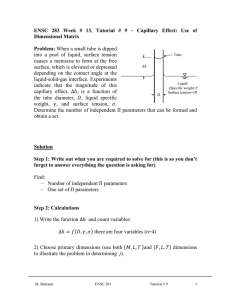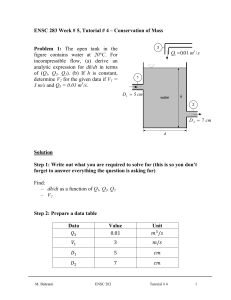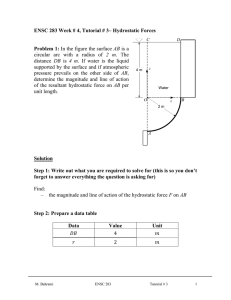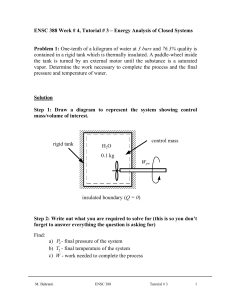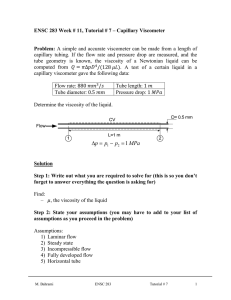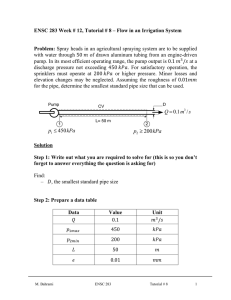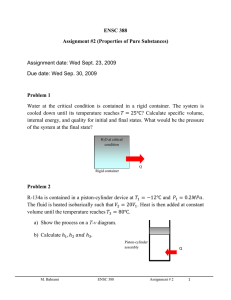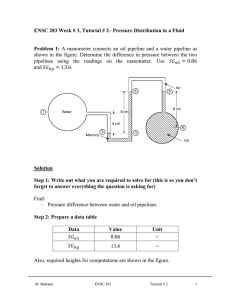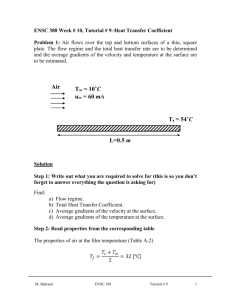Document 12446469
advertisement
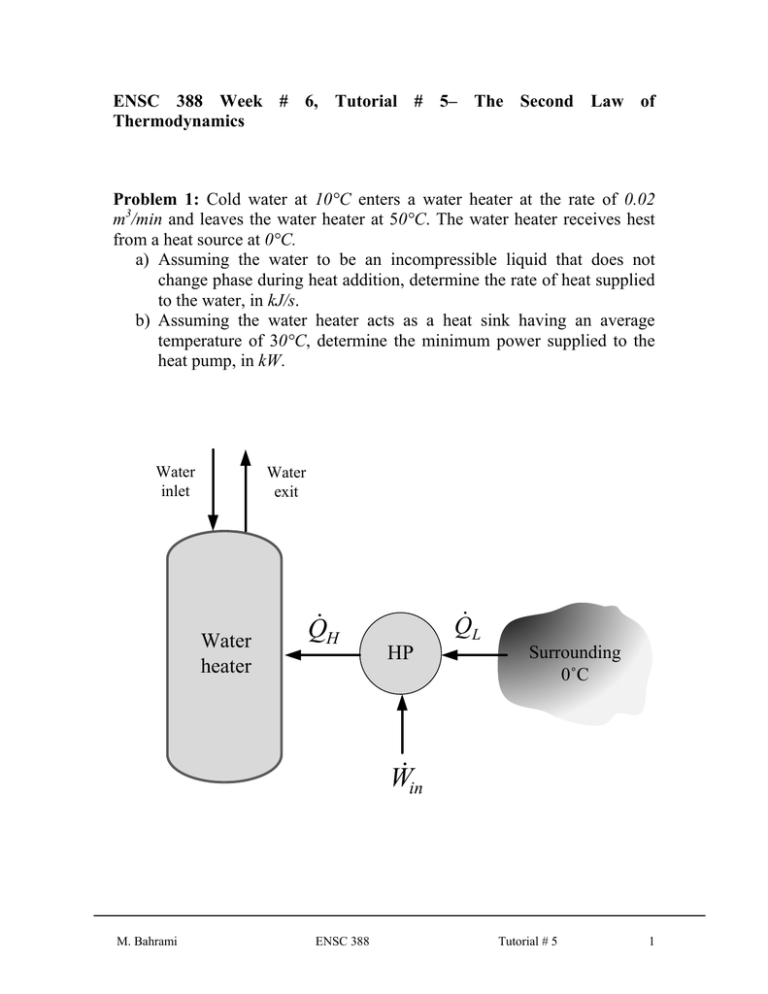
ENSC 388 Week # 6, Tutorial # 5– The Second Law of Thermodynamics Problem 1: Cold water at 10°C enters a water heater at the rate of 0.02 m3/min and leaves the water heater at 50°C. The water heater receives hest from a heat source at 0°C. a) Assuming the water to be an incompressible liquid that does not change phase during heat addition, determine the rate of heat supplied to the water, in kJ/s. b) Assuming the water heater acts as a heat sink having an average temperature of 30°C, determine the minimum power supplied to the heat pump, in kW. Water inlet Water exit Water heater Q H Q L HP Surrounding 0˚C Win M. Bahrami ENSC 388 Tutorial # 5 1 Solution Step 1: Write out what you are required to solve for (this is so you don’t forget to answer everything the question is asking for) Find: a) Q H - the rate of heat supplied to the water. b) W - the minimum power supplied to the heat pump. in , min Step 2: Prepare a data table Data Value Unit T1 10 [ C ] T2 50 [ C ] TH 30 [ C ] TL 0 [ C ] 0.02 [m3 / min] Step 3: State your assumptions (you may have to add to your list of assumptions as you proceed in the problem) Assumptions: 1) Steady operating conditions exist. 2) The kinetic and potential energy changes are zero. 3) Constant properties are used for the water. Step 4: Calculations The specific heat and specific volume of water at room temperature are c p 4.18 kJ / kg and 0.001 m 3 / kg (Table A-3). a) An energy balance on the water heater gives the rate of heat supplied to the water. M. Bahrami ENSC 388 Tutorial # 5 2 Q H m c p (T2 T1 ) c p (T2 T1 ) (Eq1) (0.02 / 60) [m 3 / s ] (4.18 [kJ / kg . C ]) (50 10)[C ] 55.73 kW 3 0.001 [m / kg ] b) The minimum power output is related to the maximum COP which is the COP of a reversible heat pump operating between the specified temperature limits. COPmax 1 1 TL TH 1 1 (0 273) 10.1 (Eq2) (30 273) Note: Temperatures must be in Kelvin. Then, the minimum power input would be Win, min M. Bahrami Q H 55.73 kW 5.52 kW COPmax 10.1 ENSC 388 (Eq3) Tutorial # 5 3
